#upstanding american war criminal (soldier)
Text
Sources & Significance 1_1.9 - Applying Knowledge critically
As promised all the way in Blog 1 of this series I will now explore one of my favourite games through the lense of all the concepts we’ve explored so far.

Spec-Ops : The Line
Spec-Ops: The Line is 2012 Third person military Shooter. You are part of a 3-man military squad invading an isolated and occupied Dubai to find a former comrade and his squadron who have gone radio silent and find themselves trapped inside Dubai.

Narrative
Spec-Ops follows a ‘Vector with Side Branches’ Narrative Structure with an intentionally generic premise. You will make choices that affect largely only the following section and have no bearing on the overarching storyline. However these choices will help the player feel engaged and near the end of the game will help your broader understanding of the situation you find yourself in. You will also make a choice at the end that will determine 1 of 3 possible endings. It often puts interactivity at the forefront. Forcing you into extremely stressful and morally questionable situations and asking you to respond quickly. This does an extremely effective job at putting you in the shoes of the main character as he “falls from grace” inch by inch. Your Melee Takedowns become more and more brutal, your character becomes more and more dirtied and haggard as the story goes on, your colleagues lose respect for you and eventually madness takes you and you end up dooming the very people you came to save. In this sense interactivity is integral in making you feel responsible as the narrative throws you around until you become lost in the chaos and find yourself little by little pulled away from the person you were and coming face to face with the monster you’ve become.

Semiotics
Symbolism is strong in Spec-Ops: The Line in fact even the menu screen highlights your descent from ‘American hero’ to War Criminal.
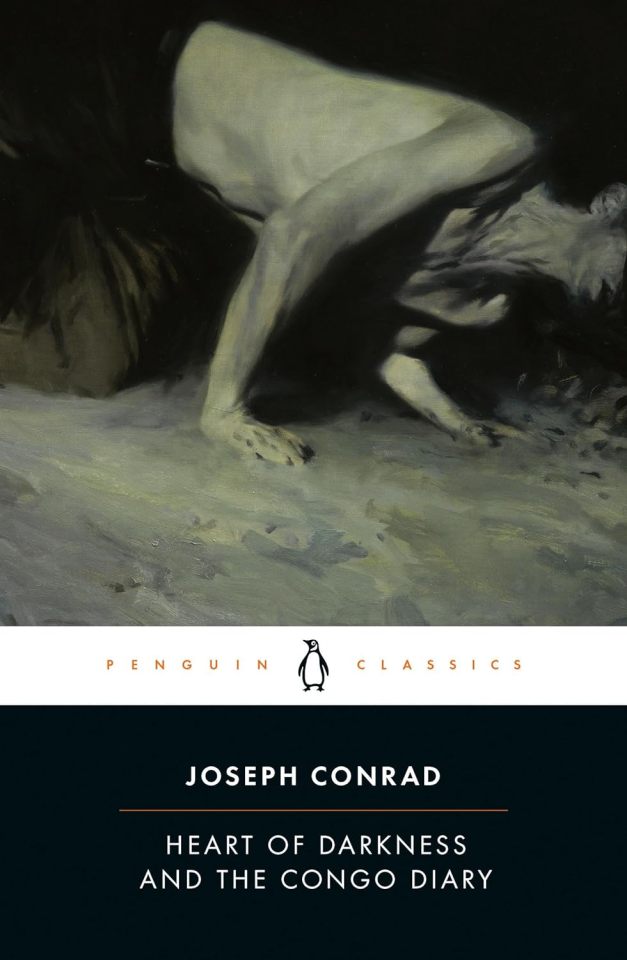
Transmedia
It is a loose adaptation of Joseph Conrad’s novel ‘Heart of Darkness’ and in a more direct sense it’s Frances Ford Coppola adaptation ‘Apocalypse Now’. Following the same descent into darkness, but adding to the feeling of horror through direct interactivity. You are responsible, not just a passive observer. Additionally the game breaks he fourth wall continuously, asking you if you feel like a hero in the loading screens or how many US Soldiers you have killed already.
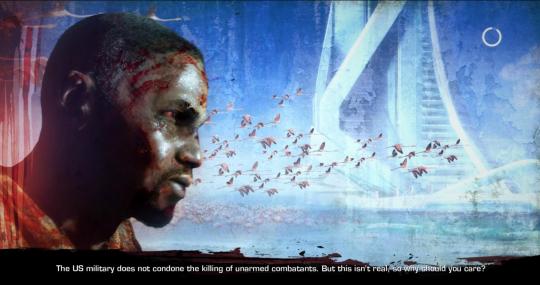
Identity & Culture
Spec-Ops: The Line explores and deconstructs the ‘White Saviour’ myth. You arrive at the beginning of the game as a heroic and upstanding military man who believes in his ability to do good for his country and save your comrades as well as the people of Dubai. But more and more you descend into the true darkness of this conflict, every choice you make, no matter how seemingly good natured and noble, ends up making things worse for yourself, the conflict and the people of Dubai until the lines become so blurred that you can not see a way back to the person you were.
REDDIT (2020). [Online]. Available at: https://www.reddit.com/r/GamingDetails/comments/kja1a2/spec_ops_the_lines_main_menu_screen_changes/
ITBLOG (2013). [Online]. Available at: http://www.itbrog.com/journal/2013/8/5/spec-ops-the-lines-ptsd-commentary-and-the-power-of-games.html
GREATWALLSTUDIOS (2012). [Online]. Available at: https://greatwallstudios.blog/2012/07/12/spec-ops-the-line-game-review/
TUNI (2018). [Online]. Available at: https://www.tuni.fi/playlab/estrangement-in-digital-games-killing-for-entertainment-and-cognitive-dissonance-in-spec-ops-the-line/
AMAZON. [Online]. Available at: https://www.amazon.co.uk/Darkness-Penguin-Classics-Joseph-Conrad/dp/0141441674/ref=asc_df_0141441674/?tag=googshopuk-21&linkCode=df0&hvadid=310882602643&hvpos=&hvnetw=g&hvrand=2446033964997784712&hvpone=&hvptwo=&hvqmt=&hvdev=c&hvdvcmdl=&hvlocint=&hvlocphy=1007160&hvtargid=pla-454107430765&psc=1&mcid=456d96293fd134f090d09385f8cb749b&th=1&psc=1
0 notes
Photo
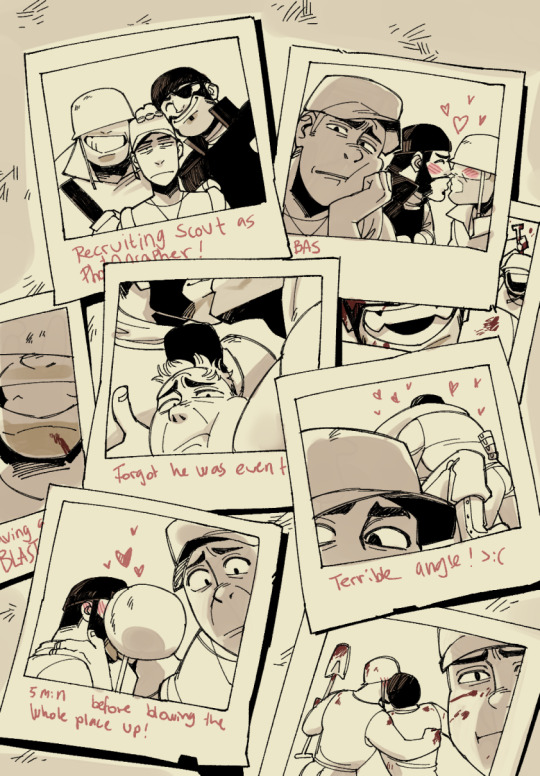
Day 1: Memories (ft. professional 3rd wheel Scout)
I’m late but fuck it if I’m letting myself miss out of Boots and Bombs Week
#dnadbnbweek#boots n' bombs#tf2#Own Art#upstanding american war criminal (soldier)#the real sex bomb (demoman)#mc frickin cree from frickin overwatch (scout)
3K notes
·
View notes
Link
“In America today, there are more cars than drivers. Yet our investment in these vehicles has yielded dubious returns. Since 1899, more than 3.6 million people have died in traffic accidents/crashes in the United States, and more than eighty million have been injured; pedestrian fatalities have risen in the past few years. The road has emerged as the setting for our most violent illustrations of systemic racism, combustion engines have helped create a climate crisis, and the quest for oil has led our soldiers into war.
Every technology has costs, but lately we’ve had reason to question even cars’ putative benefits. Free men and women on the open road have turned out to be such disastrous drivers that carmakers are developing computers to replace them. When the people of the future look back at our century of auto life, willthey regard it as a useful stage of forward motion or as a wrong turn? Is it possible that, a hundred years from now, the age of gassing up and driving will be seen as just a cul-de-sac in transportation history, a trip we never should have taken?

mother of a traffic crash victim. via ourdid.org
“Sane, upstanding pedestrians didn’t murder one another as they ran errands around town. Sane, upstanding drivers did, or might at any moment, and thus required a new style of policing. “How could a democratic society founded on self-governance depend on police governance and still be free?” Sarah A. Seo, a law professor at the University of Iowa, writes in her remarkable new book, “Policing the Open Road: How Cars Transformed American Freedom.” “How could the laws be fashioned to allow the investigation of potential criminal suspects without harassing law-abiding citizens when everybody drove?”
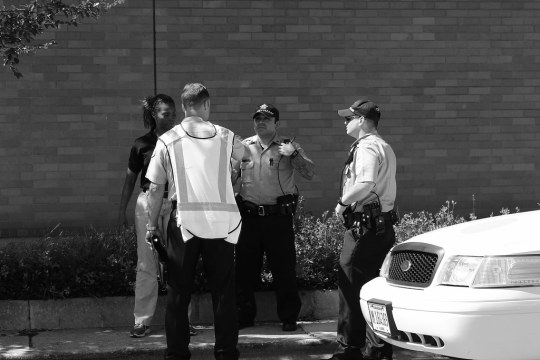
police traffic stop, chicago. flickr/andre van vegten
“Seo’s idea is that the problem of policing cars, far from being a remote corner of the law, is central to how the jurisprudence of the Fourth Amendment (searches and seizures) took shape during the past hundred years. Automobiles, after the Model T’s expansion of personal ownership, confounded the parameters of the amendment: a car would seem to be private property, but roads were public, and the conduct of cars—traffic, transport—was a matter of public concern. The issue became pressing, legally, during Prohibition, when smugglers began using privately owned cars to traffic hooch.
A turning point arrived in the bootlegging case Carroll v. United States, decided in 1925. The Supreme Court Chief Justice William Howard Taft wrote, “The seizing officer shall have reasonable or probable cause for believing that the automobile which he stops and seizes has contraband liquor therein.” In Seo’s view, Taft’s opinion “shifted Fourth Amendment jurisprudence from a categorical analysis—is the automobile, as a category, public or private?—to an individualized determination of reasonableness—was this particular search reasonable?—to determine the warrant question.” The person who did the determining, under this new standard, was an officer of the law.”
recommended—read more: newyorker, 22.07.19.
7 notes
·
View notes
Text
American Opiates
The expansion of control and regulation within communities that have been striated by the violent realization and creation of an “opiod crisis” specifically relies upon a certain derealization, democratization, and deterritorialization of the society of control, the means by which the creation of a market of fentanyl derivatives and their insertion into the previously-existing supply of opiates constitutes a certain specific sort of control and moreover a concentration upon supposed reforms that in turn simply consist of more dramatic and colonial displays of power.
To understand American drugs in contemporary society, some brief archaeology of buried needles and roach clips is necessary. Opiate abuse, whether alone or with abuse of cocaine, benzodiazepines, or other drugs is not new. The terms upon which the opiate crisis has been founded can only be considered as part of an ideological maneuver to codify police power, specifically through a kind of Foucauldian realization. Even in the reversal, the ironic creation of Narcan as a sort of commodity presents its own unique potential.
The structure of the drug market in North America was dramatically changed in the 2000s when converging forces came together: the imperialist violence of the Iraq and Afghanistan wars, the structure of the hospital/asylum/prison of the VA and its flow through apparatuses of capitalist reterritorialization formed by drug companies with specific incentives to push the prescribing of certain painkillers, Oxycontin most prominently but more generally oxycodone, oxymorphone, hydromorphone, hydrocodone, and the eventual reversal of these through maintenance drugs such as methadone and finally the violent reterritorialization of an opiate-induced Body without Organs through the administration of Narcan. These all specifically harken to the strange space of the American hyperreal in the days of the mid-2000s: a certain ideological liberal-democratic commitment seemed to dominate what has now resurfaced as radical critique, the means by which even in facing anarchist critique, the proliferation of black bloc tactics at radical anti-war demonstrations, the reversal of Bush manifesting in an ironic turn of neoliberalism, the move from a society marked by the domesticity of Columbine to the crusader mindset justified in the martyrdom of 9/11, leads to a specific burgeoning schizophrenic development of the hyperreal beyond itself, a Virtual expansion beyond digital capacities, a time where “iPhone-a-friend” was a comprehensible term to describe approximating the digital realization of the smartphone in the Virtual space of interaction by calling a friend near a computer to look up information in a kind of approximation of the smartphone. The culture of the returning soldier, the way that the kind of undefined body of the Veteran was realized in a means of organizing prosthetic accounts of demarcated, striated bodies which could stand for the realization of PTSD or schizophrenia or collapse under the weight of Oedipal acts of signification, a means of advancing discussion of the body without recognizing bodies outside of colonial class, soldiers exhibiting gay and transgender and racialized and psychotic subjectivities specifically as means of not assessing these structures as realized in other bodies, outside of colonizing means of reckoning the body. A becoming-soldier was foundationally a sort of becoming-American, and the far more variable character of “veteran” as an identification at this point in time was part of the growing consciousness that liberal-democratic ideology channeled into Obama’s election.
To further develop this, discussing the importance of OxyContin to the VA, one realizes that it was not through the non-war of the Gulf War, but the ongoing occupation, the New Vietnam of Iraq and Afghanistan, and how the previous structuring of heroin addiction in America was transposed and repeated by the proliferation of opiate-based painkiller prescriptions among veterans of numerous classes. These provided the first points at which opiate painkillers began to become a common commodity, along with the enhancement of drugs such as Xanax, which could function to either potentiate the drug, or as part of a specific polydrug experience that coupled the antidepressant effect of oxycodone with the anxiolytic effect of Xanax, itself a powerful, fast-acting drug that lends itself to compulsive redosing. In Vietnam, the listlessness of daily life, the repetitive structuring of derealized and unknown patrols that combined a country occupiers did not care to know with the intensity of ambush as a sort of engagement between the deterritorializing structure of the American military the opposing reterritorialization by the NVA. Thus, just as a needle plunges into skin and vein, ambushes serve as a kind of punctuation against support of genocidal banality that is in continuation of a settler-colonial home life which either imposes itself upon many of those wearing fatigues in Vietnam, or is increasingly clear as that which it is, the contradictions of American chauvinism becoming apparent from the all-too-familiar structure of the American poststructural hierarchy in Vietnam. The creation and maintenance of the draft, the structuring of a kind of culture accepting of it as random happenstance, an acceptance of a genocidal war of occupation where burning of a draft card and burning a joint became similar sorts of actions, far divested from draft riots of the Civil War by Irish-Americans operating on white supremacist ideation of Confederate and Union opposition, resulted in a kind of irresolvable tension for the larger structure of the American nomadic war machine. It had, through a kind of collective dropping out, overdosed on heroin and LSD and become an unsustainable beast. Fragging scarred its body as fallout filled its lungs, spores of a deadly disease that more and more rapidly ate away at it. Nothing comparable to the same kinds of genocidal actions visited upon Vietnam, Korea before, upon the Philippines for generations. Thus, the eventual move toward a volunteer military: by shifting ideology, creating new means of becoming a soldier, the lexicon of warfare became something else entirely. Wars of balkanization and proxy during the 80s and 90s, bases in Germany and Japan that served as their own societies, a kind of popular understanding of the military as a “way out” far more feasible than professional football, allowed for the military to maintain a high standard of life in public perception and the creation of a larger attitude toward the military as a space of capitalist self-help, New Age advancement, but when faced with a new Vietnam, with ambushes and a fundamental asymmetry rather than the disparity that made the Gulf War such a dramatically anti-War series of oppositions, the realization of mutilation of the body became the overcoding character of going-to-war, and in a failed state only heavy drugs could do for numbing this pain. Opiates became an American prosthetic, a vital part of the American body’s functioning.
The VA, dealing with a deluge of injuries that were lifelong, that were characterized by the acceptance of brokenness and trauma in a way that had not been present before, the realization of a useless and criminal (not to ruin the reputation of good, upstanding criminals) war justified to itself writing prescriptions for large quantities of opiates. Given high costs of care and the easy friendship that cheap drugs bring, the sharing of painkillers was only natural. And considering the massive quantities of opiates going into a place like Florida, a few hundred thousand pills a month would hardly be missed at the time. Florida’s transition to a state for snowbirds was complete, and the importance of this is paramount in that it offered a kind of plausibility. Certainly, there are numerous young pain patients, and that an abundance of pain clinics with doctors willing to prescribe opiates was an asset for these patients. The diminishing of chronic pain, of the usefulness of opiates for daily functioning, the creation of opiated life as a state of disrepair by its very ontic nature rather than as a specifically manufactured precarity is in no small part an ideological turn created by the changing of hospital staff paradigmatic to the current politics of opiates in America. But at the same time, naïvete is unbecoming. There was not a sudden acknowledgement that the trauma of injury as a lifelong frustration well-treated by opiates on multiple levels was an acceptable model of the body. Rather, incentives to prescribe OxyContin continued to pour in. By setting up systems of referrals, doctors who wanted to sit back and write prescriptions after easy exams, patients and doctors alike who knew how to signify the structure of treatment without any injury present, who were able to create a new sort of becoming-patient, created a new industry in Florida entirely centered around running, protecting, and relocating pill mills. West Virginia, one of the hardest-hit states in the recession of the mid-2000s, a state that has always been part of America’s colonial backbone but was abandoned to squalor and a kind of economic necrotizing fasciitis found that reproducing a kind of Prescribing with Florida Characteristics, an industry of proliferation like that of Virginia and the Iron Highway, lead to young people having money and something to do with their lives. When combined with the golden days of Missouri meth, when precursors were plentiful and Missouri was creating some of the cleanest meth seen by man, a small section of the southeast went from simply a source for cocaine and ditch weed to the nexus of prescription drug trafficking in America.
While pills were plentiful, found in stronger and larger quantities at all levels of the chain and reterritorializing places like Boston, Long Island, Sacramento, Ohio, West Virginia, New Orleans, there started to be a sort of cultural shift toward what now seems like a paltry number of overdoses on prescription drugs. The use of such substances in such a fashion was unconscionable largely because of the ideology of the hospital as an apparatus of control, rather than the actual deaths at hand. So, these prescription drugs were made slightly harder to get. Prices began to rise, as did tolerances, and the turn toward heroin began. That heroin is such an effective analgesic, has immense euphoria that pairs well with cocaine, alcohol, Xanax, even the electric jolt of LSD, and was available not far from the previous connections, through the previous networks, in places like Hartford and Newark and Chicago and San Diego and San Francisco, meant that pill habits naturally came with a closeness to heroin now, and an eventual process of upgrading once a habit became too expensive to maintain, followed by the supposedly logical decision to spend the same amount but spread out usage, the failure to do such due to the compulsion to redose, and the eventual creation of a new habit just as expensive (if not moreso) and all too close to the flow of drugs needed to maintain such a habit meant that heroin became an enormous market. It has become something that is at once an ultimate taboo and just that: taboo in a fashion that invites its violation, a kind of experience that is marked in all sorts of ways, from wanting to know what one’s friends experienced before dying, to wanting to feel the euphoria of this or that prescription opiate without the cost. Again, rather than respond to the market as a capitalist ostensibly would, the fascist character of American ideation and introspection showed itself in the form of more violent actions surrounding the heroin trade. By increasing this violence, making heroin more valuable by weight, it encouraged keeping up the potency of a product, easily done with fentanyl, an incredibly powerful opiate produced synthetically. Active in sub-milligram doses, fentanyl acts as an effective cut in a well-mixed batch, bulking and potentiating the heroin while synergizing with the usual addition of Xanax and marijuana, giving more bang for the buck. While more dangerous than diphenhydramine in the same context, it serves to complement good heroin when mixed right. But the unpredictability of fentanyl analogues, a step in the market necessary to maintain the apparent-legality of manufacturing these products, leads to a situation where fentanyl is used to make up the bulk of a product rather than simply cutting it, where cut fentanyl is sold as heroin or oxycodone or even comparatively weak hydrocodone, causing an enormous risk of overdose when one considers the tendency of fentanyl to self-adhere and form what are often dubbed “hot spots” in a bag or pill.
Hot spots are a certain sort of singularity in that they represent every single case of overdose in one, both the most literal interpretation of it and more generally as a representation of a larger tendency of fentanyl as a substance. Any dose beyond the necessary therapeutic dose, including unnecessary dosage, is understood as an overdose. Taking more than prescribed for recreational effect, or taking another’s prescribed substances is a sort of overdosing, then, which is consistent with the recognition of heroin as a medication, an effective analgesic which still has valuable applications as a specialized painkiller. The recognition of heroin as a counterpart to other supposed-prescriptions is important in that it recognizes the means by which it is prohibition and the creation of a black market for a relatively easily created and smuggled product that its illegality becomes part of a kind of structure of taboo. Similarly, the regulation of methamphetamine recognizes this, with prescription meth available as Desoxyn, a treatment for severe ADD/ADHD or narcolepsy that has not responded to previous long-term treatment. Good meth is often paired with good sex, good work, good lives that can easily turn for the worse when meth use is exposed, but conversely seen as part of a relatively normative and continuous expanse of life in a way that would be unthinkable for some without proper vocabularies of drug use. In some circles, the sexualized slamming of meth, use of meth by injection, is a sort of non-issue, is simply part of a fetish community like any other. The relatively lax attitude about injection drug use that breaks taboos about social conduct so dramatically goes along with an acceptance of an already-present homosexual and homosocial taboo that has long since lapsed into a kind of structuring psychosis, a looming psychologist in the background serving as a figure to be ridiculed. This is itself mirrored in the recognition of the taboo against heroin as one imposed largely by its prohibition, the specific process of directing heroin to become a black market drug while morphine remains within polite conversation as simply part of the usual milieu of hospital medications. Heroin is equally at home in the body of a person in pain and a person seeking euphoria, and that it is manufactured from morphine in “homebake heroin” scenes is itself a sort of wavering between polarities of use and communal understanding regarding exactly what one finds in drug use and drug communities. Fentanyl as a recreational drug began to find its first legs when held in matrix on a transdermal patch: either the patch could be applied to the skin for a high lasting multiple days as the painkiller was released in its usual form, or it could be ripped from the patch in various methods, such as using the more absorbent skin of the mouth to ingest it, or traumatizing the patch with a flame to the point where it died in a wistful vapor on foil like so many other chased dragons before it. However, the ease of manufacturing fentanyl, the place it held within certain chemical circles as far as returns on investment were concerned, lead to it becoming a quick and easy source of income for many chemists who would have otherwise taken more laborious paths to clandestine incomes.
Fentanyl is not the only drug that has seen an increase in use due to this: the ease of manufacture and potency of alprazolam is itself realized alongside the same sources as fentanyl. That alprazolam is incredibly cheap and can be marked up astronomically when sold right is part of what makes the clandestine manufacture of it so popular: the market for Xanax is flooded past a certain watermark, and it keeps flowing in. As more and more demand grows, selective application of supply can keep prices high for those who will only buy small, and low for those buying in bulk. Markets of all sorts are created and Xanax has shown a remarkable ability to adapt to users, from those who would ordinarily turn to prescribed anxiolytics but are prevented by prohibition, to those who chase a certain-sort-of-high provided readily by homebrewed lean, overdosed xanax bars, and good but overpriced cocaine. All of this means that, like fentanyl, there is a demand and a producing-production ready to fill it. The combination of the two leads to a certain sort of deadliness specifically because of the singularity of the hot spot: manufacturing that is strengthened specifically by existing outside of usual flows of commerce leave these singularities simply because the flawed output that can be discarded by larger and legal entities represents instead profits that cannot afford to be lost on a product with no customer service hotline. Instead, combinatory properties lead to overdose, to death.
America is now going through withdrawals, is becoming sick specifically because of where and how and why it saw a rise in prescription drug use. And the response has itself been an overdose. There is a noted and recurring tendency within police and EMS units to overuse narcan, to respond to harmless nodding with a dose of the substance and a precursory hospital visit before arrest. It is being intoxicated in public without the proper reverence to the asylum as a kind of collecting of these individuals, without giving police a kind of precursory control over one’s body, without displaying proper biopolitical reverence, that one finds these cases. Targeting is based on sexuality, race, gender, and certainly can find its expression in violence toward those who blur lines set by gendered and colonial structures. An American problem is solved in a uniquely American fashion, killing until the problem is simply a pile of bodies, until it threatens the greater American realization of self and self-for-Others, a point at which a symbolic notion of good is referenced and police are called upon to do a final sort of good for those around them.
American opiates, as a substance, as a culture, are part of larger machinations of late capitalist violence and cannot be mistaken as passing contingencies but rather part of the larger, hyperreal globe reacting to the center of a hegemonic order descending into a sort of series of conditions mimicking what it itself would name a “failed state.”
1 note
·
View note
Text
I’m probably not the only person that finds the moral framing of ‘Marvel’s The Punisher’ odious, right?
So, in the text, Frank constantly tortures and murders people. First because Agent Orange told him Congress wanted him to, and now because he thinks they’re dirty. For no other reason than writer’s fiat, Frank only hurts people who are deliberately framed as evil, with ONE exception. Zubaida’s fate is easily blamed on Agent Orange, so even that guilt is easily dealt with. It wouldn’t even be fair to say that Frank feels particularly guilty about what happened: it certainly not what the show focuses on. It’s more about the dishonor Agent Orange supposedly brought to Frank and the rest of Cerberus by lying about it for personal gain.
In general, the whole idea of American Death Squads and corruption in Afghanistan is framed as the responsibility of one man, and we are taught to accept that, if Congress had given its approval and Cerberus had been just a death squad with no ulterior motives, Frank’s actions would have been fine.
One the one hand, this is a problem with all vigilante action media that wants to bring up moral questions about vigilantism: the Punisher just wants to use Frank’s brutality to seem edgy, but it has no real ability to question it in a way that would allow Frank to look like a hero. It wants to have its vigilante cake and deconstruct it, too.
The fact is that Frank is a war criminal, and no congress could change that. Someone told him to torture and kill, and he did it. The show clearly thinks that this sort of situation is rare and only a clearly ‘evil commander‘ would give such orders without good cause, even though we know it isn’t rare at all, and barely even controversial in recent American history.
By dehumanizing 99% of Frank’s victims, and framing the soldiers in its cast as deceived but honorable people, even as they commit obvious war crimes, this show makes a political statement that justifies this kind of behavior. It even doubles down on its pro-torture stance by bringing up the fact that torture doesn’t result in reliable information, but only by having a villain say it, and has our protagonist ignore it and stay torturin’ the whole season.
The Intelligence Community and Military are depicted as basically good mass murderers, torturers and propagandists, with the occasional corrupt person, easily disposed of through vigilante justice. Our ‘heroes’ are only motivated by petty revenge and self-interest, and are still portrayed as world-weary wise men who know what the world is ‘really like’.
Netflix had an opportunity to say something about the way the military-industrial complex chews up young people and uses them to kill for profit, or how Frank is ultimately a danger to himself and everyone around him. But Punisher goes the other direction, desperate to absolve Frank by having his revenge fantasy pay off. Desperate to make the idea of murdering and torturing hundreds seem basically justified. Desperate to make the United States Military and CIA look like upstanding organisations, basically. I half expected some of the characters to lauch into a tirade about how civilians have no right to question the decisions spies and soldiers make doing the hard and thankless work of protecting democracy.
But why did I expect a show like this to be critical of the most powerful imperial organisations in the world? You’d think I would have learned by now not to get my hopes up.
1 note
·
View note
Text
I mean, Attack on Titan is a dumpster fire. And I don’t mean that in an endearing way like how I talk about Jojo’s Bizarre Adventure or most other anime. I mean like it is a smoldering pile of trash and the point where the villains became other humans is like someone sprayed gasoline all over the embers. The fact that I stay caught up with it is half morbid curiosity and half because I already entrenched myself in this shit years ago. It’s a prominent series too, it’s not some obscure little turd with a name like “I Was Not Expecting My Preteen Sister To Be An Incestuous Nymphomaniac” that nobody would have ever known about under morally-upstanding circumstances. I mean, I feel dirty. And not just because I just typed out that hypothetical (yet entirely plausible) manga name. It’s like, you got your standard weeaboo fare that you’d call trash affectionately. And then your lesser-known titles that you’d call trash because the author did some weird choices that trying to defend will dig you into a hole. Then you have the otaku-pandering, goldfish poop, deep web ecchi shit that you only hear about thanks to people discussing them with Schrodinger's Irony. AND THEN you have Attack on Titan which is every bit as ubiquitous as the mainstream titles (it IS a mainstream title) but is nothing but thinly-veiled Axis Powers propaganda dressed up in a fantasy setting. The way I described it, I wasn’t even embellishing any of those details. And you know, as a German-American, I don’t enjoy implying that imagery originating from my ancestors automatically means fascism, but context matters. You’re watching a show about German soldiers fighting to reclaim their land from dangerous subhumans, and that’s just the opening act of a story written by a WWII apologist who idolizes war criminals. The true plotline is currently blossoming like a titan arum. Or a prolapsed rectum.
6 notes
·
View notes
Text
Expert: I envy you. You North Americans are very lucky. You are fighting the most important fight of all. You live in the belly of the beast. — Dr. Ernesto “Che” Guevara A birth certificate from somewhere between the beast’s belly and its beating heartland condemns me to the dubious distinction of being among the privileged 5% of humans who claim United States Citizenship. A population which demands the right to consume 25% of earth’s resources while billions of our fellow-humans go hungry. A shame it was wasted on me, for I’ve never been one to make my country proud. Basically, I’ve always been a bad American. Cases in point: I never stand for The Star-Spangled Banner, nor do I Pledge Allegiance to the Flag of Retroperistalsis. I no longer believe in, nor vote in sham, mockery-of-democracy U.S. elections. I make no investments in Wall Street, for fear of inadvertently supporting The Military-Industrial Complex. If I happen to turn on the evening so-called news, I can’t resist calling Lester Holt “America’s House Negro”, for Holt’s Nightly Lies loudly confirm what Chris Hedges tells us: “No real journalist makes $5 million a year…Those in power fear and dislike real journalists.” And I pray regularly to whatever gods may be that Empire dies with a whimper, rather than a bang…and soon. There is little doubt that I am, and have for many years, been a traitor to Empire and its agendas of Neo-colonialism and wars for profit. Fifty years ago, while Che Guevara was being summarily executed by the C.I.A. and its Bolivian Military stooges, my lifelong battle against Empire was just beginning. Che’s last words were some of the most prophetic ever spoken, as he looked his assassin in the eyes and said: “Shoot coward. You are only going to kill a man.” Only the good die young, they say. It is said that Che is much more powerful in death than he was in life, as a half century later, his legacy lives on and grows. Two years after his demise, he’d lit fire of discontent beneath a whole generation of Americans, and stood posthumously by my side as I gave the U.S. Army my very best middle-fingered salute, thereby refusing induction into the most over-funded, offensive, aggressive, killing force the world has ever known. My neighbors and acquaintances are not evil or bad people. They’re simply oblivious to what George Carlin lovingly called “the big red, white, and blue dick” being shoved up their asses by the likes of Lester Holt and his cadres in criminal propaganda on a nightly basis. Americans are to be pitied for their willful ignorance. If I were a Christian, I’d ask God to forgive them, for they’re a bunch of clueless jackasses who know not what they do. But not being a believer in the imaginary bearded man in the stratosphere, I write. Not that I have any delusions of being omniscient, but my moderate level of enlightenment has been reached, one step at a time, one book or article at a time, and Che’s sword is now my pen. Che’s rifle, my Hewlett-Packard. The pen (in certain circumstances) is mightier than the sword. If Che had fought the Revolution, in the belly of the beast, with bullets, he would have been eliminated long before 1967. Lucky for me, thus far, Empire only executes the highest-level truth-talkers and traitors to the Military-Industrial agenda. NBC demoted Brian Williams for the high crime of telling his own personal lies, instead of just the official ones, then replaced him with Mr. Holt. I’d seriously doubt whether either of these corporate whores, or any of their collaborating competitors give a rat’s ass whether their thousand-dollar-a-sentence blather bears any resemblance to the truth. Truth is the enemy of the overlords they serve, and has no place in the nightly news agenda, nor in any facet of Empire’s Disinformation Network. Truthful coverage of Empire’s latest wars for profit: Forbidden. Questioning the basic good intentions of our exceptional government: Not allowed. Tow the line, learn and regurgitate the fabrications du jour, read all recent directives from the C.I.A., keep your nose clean, your Armani Suit pressed, and God Bless America. My insouciant neighbors and acquaintances have never heard of Noam Chomsky, and know nothing of Manufactured Consent. They have never seen a copy of Howard Zinn’s A People’s History of The United States. They have no idea that “War (really) is a Racket” (Brigadier General Smedley D. Butler). They’d likely not even blink an eye at the atrocities wrought against the Southern half of The Western Hemisphere by the U.S.A. and its European counterparts, as artfully reported by Eduardo Galeano in Open Veins of Latin America. Hugo Chavez gave a copy to Barack Obama shortly before his mysterious and suspicious demise. Too bad Barack never read it. Not that he would have cared, being well programmed by the C.I.A. When I’ve tried to explain to mainstream Americans the dastardly scheming of the C.I.A. in foreign countries; its economic hit men and jackals, bribery, coup d ‘etat, assassination, and finally bombs and bullets…as exposed by ex-C.I.A. Operative John Perkins in Confessions of an Economic Hit Man, the responses are glazed, dazed expressions. I might as well be talking to four-year-olds when explaining that 9-11 was an inside job, as proven beyond a shadow of a doubt by such sources as Michael C. Ruppert’s Crossing the Rubicon, or that the C.I.A. and other branches of our government eliminated J.F.K. for choosing the path of peace, as explained by James W. Douglass in his masterpiece, J.F.K. and the Unspeakable. The subtitle of the J.F.K. volume is “Why He Died and Why it Matters”, but what really matters to my adult four-year-olds is whatever professional gladiator games happen to be in season. Americans don’t want to hear that “terrorism” is nothing but the direct result of Empire’s overreach and military incursions into every little resource-rich, under-militarized country on earth. Who, outside a few conspiracy theorists like me could give a shit about Chalmers Johnson’s trilogy, which includes “Blowback”, and exposes The U.S. Military’s Empire of Bases and aspirations for complete world domination? If I happen to mention The Great American Holocaust (the most deadly in earth’s history), as graphically illuminated in Roxanne Dunbar-Ortiz’s An Indigenous Peoples’ History of The United States, in oblivious company, white faces gaze at me in wonder…wondering why I’d care about the slaughter of a few tens of millions of inferior beings. One of the biggest secrets in the U.S.A. is the mystery of the most enduring, morally upstanding, and advanced civilization in earth’s history; a story expertly told by my friend Jeff J. Brown in China Rising: Capitalist Roads, Socialist Destinations. After 100 years under the heavy hand of Empire, the sleeping dragon is once again rising. Empire knows it…thus the so-called Pivot to Asia Strategy, and another $60 billion gift for The Pentagon. The few of us who’ve come to understand the intrinsic evil, and violence on every level, of the United States of America, reach a point where a choice must be made. As U.S. Citizens, we can choose denial and ignore our own enlightenment, thus remaining part of the problem. Or we can cross The Rubicon, as Caesar did, and by doing so becoming traitors to Empire, enemies of the state, and strangers in our own land. If we choose the latter, alea iacta est; the die is cast, and there is no going back. Ignorance may be bliss, but the truth shall set ye free. Empire is on a collision course with destiny. It’s a runaway train, carrying enough Weapons of Mass Destruction to turn our fading blue planet into shades of smoldering gray, and end life on earth as we know it. Never underestimate the blind, ignorant greed and mindless dreams of dominance of the sociopaths in the cab of Empire’s Engine. You know it. I know it. We are soldiers in Empire’s Underground Army, armed only with words, ideas, brilliance, open eyes, and hope. Those bearing arms need not apply. The battlefield of this war is for the minds of the insouciant. Somehow we must awaken an entire population which only pretends to sleep, and has no interest in buying what we’re selling. Always remember how lucky we are. We’re fighting the most important fight of all. Here in the belly of the beast. Hasta la victoria siempre! http://clubof.info/
0 notes
Photo
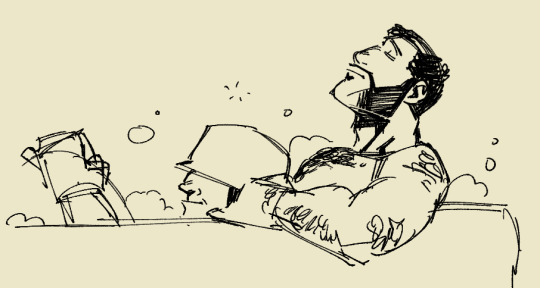



boots n bombs my beloved
2K notes
·
View notes
Photo

POV: you are scout and you are third-wheeling
1K notes
·
View notes
Photo


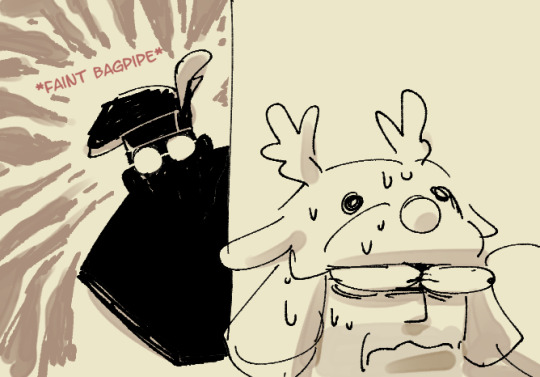
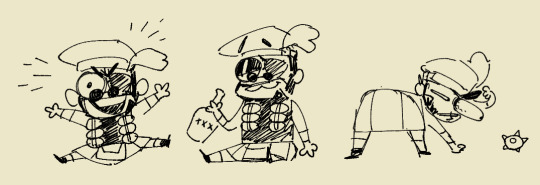

in-game idiocy
#tf2#tf2sona#upstanding american war criminal (soldier)#the real sex bomb (demoman)#mc frickin cree from frickin overwatch (scout)#huckleberry husband (engineer)#own art
483 notes
·
View notes
Photo

mister big smiles
171 notes
·
View notes
Photo

forgot to post the pride thing I made for @waterwindow
#tf2#tf2sona#pride#upstanding american war criminal (soldier)#impulse control removing surgery (medic)#own art
322 notes
·
View notes